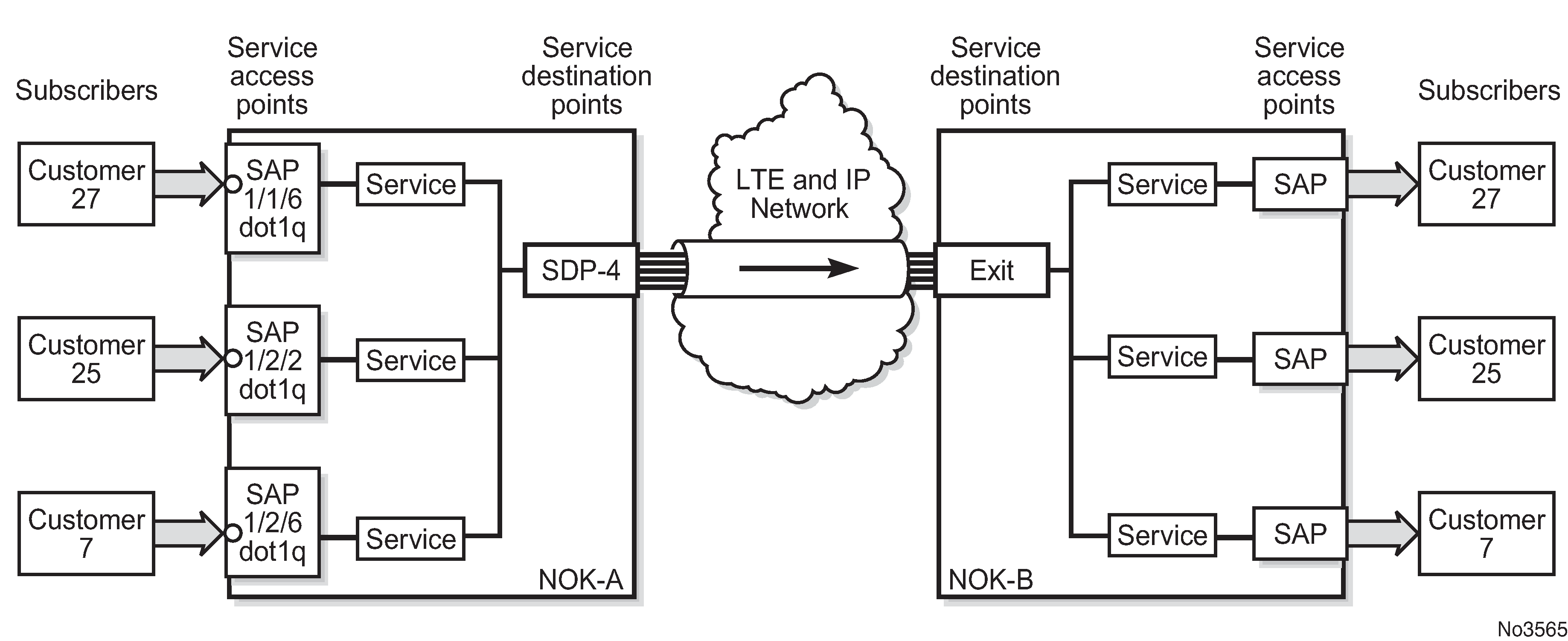SDP binding
To configure a distributed service pointing from NOK-A to NOK-B, the SDP ID on the NOK-A side (see SDP tunnel pointing from NOK-A to NOK-B) must be specified during service creation in order to bind the service to the tunnel (the SDP). Otherwise, service traffic is not directed to a far-end point and the far-end devices cannot participate in the service (there is no service). To configure a distributed service pointing from NOK-B to NOK-A, a return SDP on the NOK-B side must similarly be specified.

SDP configuration and binding is required for:
Layer 2 services that use T-LDP signaling
Layer 3 services that do not use multi-protocol BGP(MP-BGP) to advertise routes with auto-bind
For Layer 3 VPRN services that use MP-BGP to advertise routes, auto-bind can be configured on the service to automatically bind that service to SDPs with reachability to remote nodes that are participating in MP-BGP.
The VPRN auto-bind function has the following characteristics.
SDPs can be configured while auto-bind is enabled.
Configuring SDPs when auto-bind is enabled is not required to transport VPRN services between nodes participating in the same VPRN.
Configured SDPs have higher precedence and the node will select the configured SDP and its attributes to tunnel traffic to the far-end node.
Auto-bind does not require a return path SDP from a far-end router as long as auto-bind is enabled on that far-end router for the service. If auto-bind is not enabled on the far-end router, then a return path SDP to the local 7705 SAR-Hm series node is required.
For Layer 2 services that use BGP signaling (BGP-VPLS and BGP-VPWS) to exchange label information for the service, auto-gre can be configured on the pseudowire template of the service to automatically bind that service to SDPs with reachability to remote nodes that are participating in the BGP-signaled Layer 2 service. For information about the auto-GRE function available for BGP-VPLS and BGP-VPWS, see the 7450 ESS, 7750 SR, 7950 XRS, and VSR Layer 2 Services and EVPN Guide.